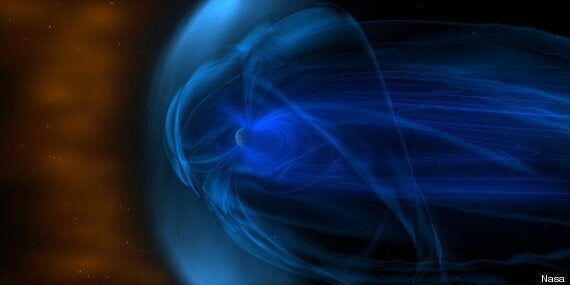When we think of Earth in space, we're used to a pretty serene image - a lonely blue pixel, floating peacefully in the ether.
We're not used to imagining something this violent.
An image released by Nasa attempts to show how the Earth's magnetic shield collides with solar particles to create a truly dramatic shockwave as it powers around the sun at 460 meters per second.

Above: The picture depicts the magnetosphere, the "giant magnetic bubble" which surrounds the Earth.
Scientists made the image as part of a study into how the 'bow shock' or foreshock, the area at the front of the shockwave, works. The aim is to understand how particles make it past this vital boundary.
"Conditions in the foreshock change in response to solar particles streaming in from the sun, moving magnetic fields and a host of waves, some fast, some slow, sweeping through the region," Nasa said.
Back in 1998 the agency sent a spacecraft - 'Wind' - which until 2002 studied how these conditions change.
In a new paper published in March, Lynn Wilson (deputy project scientist for Wind) found new information about 'Slams', which are described as "rogue waves" which develop in the shockwave.
"I stumbled on some cool squiggles in the data,Wilson said. "They turned out to be a special kind of magnetic pulsations called short large amplitude magnetic structures, which we call SLAMS for short."
The research will now be used to study how solar weather and flares can affect GPS systems and other infrastructure on Earth. Head over to Nasa for the whole story.